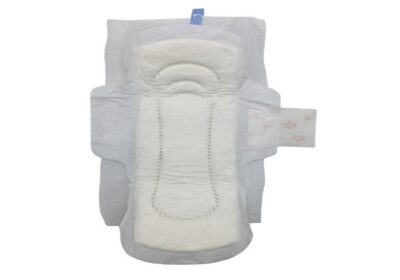
Factors That Affect Your Health Insurance Premiums
If you’ve ever wondered why your colleague pays ₹8,000 annually for health insurance while your premium is ₹18,000 for similar coverage, you’re asking the right questions. Understanding what drives these costs can help you make smarter decisions and potentially save thousands of rupees each year.
Let me break down the key factors that Indian insurance companies consider when calculating your medical insurance premiums so that you can navigate this complex landscape more effectively.
Age: The Most Significant Factor in Indian Health Insurance
Your age is the primary factor in determining your health insurance premium in India. This isn’t discrimination – it’s based on actuarial data showing that healthcare needs increase significantly as we age. IRDAI regulations permit insurers to charge higher premiums for older age groups, reflecting the increased risk associated with these age groups.
A 25-year-old might pay ₹6,000 annually for a ₹5 lakh cover, while a 45-year-old could pay ₹15,000 for the same policy from the same health insurance company. The difference becomes even more pronounced as you cross 60 years of age, when premiums can increase substantially.
For family health insurance policies, this becomes particularly important. If you’re covering your parents, as well as your spouse and children, their ages will significantly impact your overall premium. Many families in India opt for separate senior citizen policies for their elderly parents, as these are specifically designed for higher age groups and often provide better value than adding them to a family floater policy.
City of Residence and Regional Healthcare Costs
Where you live in India plays a crucial role in determining the cost of your health insurance policy. Metropolitan cities, such as Mumbai, Delhi, Chennai, and Bangalore, typically have higher premiums compared to Tier-2 and Tier-3 cities.
This pricing difference reflects the reality of healthcare costs across India. A cardiac procedure that costs ₹3 lakhs in Delhi might cost ₹1.5 lakhs in Indore. Your medical insurance premium reflects these regional variations in treatment costs, hospital charges, and overall healthcare infrastructure.
Interestingly, some smaller cities with limited healthcare facilities may have higher premiums for specific treatments because patients often need to travel to metropolitan cities for specialised care, which adds to the overall claim costs.
Occupation and Lifestyle Risk Assessment
Indian health insurance plans often consider your occupation when determining premiums. If you work in high-risk industries, such as mining or chemical manufacturing, or have jobs that require extensive travel, you may face higher premiums or specific exclusions.
Similarly, your lifestyle habits have a significant impact on costs. Smoking and tobacco consumption can increase your health insurance premium by 15-25% with most Indian insurers. Given India’s high prevalence of lifestyle diseases like diabetes and hypertension, insurance companies are increasingly factoring in these risk indicators.
Some progressive health insurance companies now offer discounts for maintaining a healthy lifestyle, completing annual health check-ups, or participating in wellness programmes. This trend is growing as insurers recognise the value of preventive care in reducing long-term claim costs.
Sum Insured and Coverage Options
The coverage amount you choose directly impacts your medical insurance policy premium. In India, coverage typically ranges from ₹1 lakh to ₹1 crore or more. Higher sum insured amounts naturally result in higher premiums, but the relationship isn’t always linear.
For instance, increasing your cover from ₹3 lakhs to ₹5 lakhs might increase your premium by 40%, but going from ₹5 lakhs to ₹10 lakhs might only add 60% more to your premium. This is because insurance companies offer better rates for higher coverage amounts, recognising that customers with larger policies tend to be more stable.
When choosing family health insurance, consider that medical inflation in India runs at about 10-15% annually. A ₹3 lakh cover today might not provide adequate protection five years from now, making higher sum insured amounts a wise long-term investment.
Family Structure and Composition
Family health insurance pricing in India follows specific patterns that can work to your advantage. Most insurers offer family floater policies that cover the entire family under a single sum insured, which is often more cost-effective than individual policies for each member.
However, the composition matters significantly. A young couple with one child might pay ₹12,000 annually for a ₹5 lakh family floater, while a family with two adults and elderly parents could pay ₹25,000 for the same coverage due to the age factor.
Many Indian families find it beneficial to have separate health insurance plans for different generations, a family floater for the younger generation, and a senior citizen policy for parents aged 60 and above. This strategy often provides better coverage at lower overall costs.
Pre-existing Conditions and Medical History
While IRDAI has made significant strides in protecting consumers, pre-existing conditions still impact your health insurance policy in India. Most insurers impose a waiting period of 2-4 years for pre-existing conditions, and some might charge higher premiums or impose permanent exclusions for specific conditions.
If you have diabetes, hypertension, or other chronic conditions, it’s crucial to disclose these honestly during the application. Non-disclosure can lead to claim rejection later, which defeats the entire purpose of having medical insurance.
Some specialised health insurance company providers now offer policies specifically designed for people with pre-existing conditions, though these come at higher premiums. The key is finding the right balance between coverage and cost for your specific health profile.
Hospital Network and Treatment Preferences
The size and quality of your insurer’s hospital network have a significant impact on your medical insurance costs and convenience. Policies with larger networks of empanelled hospitals, especially those that include premium, multi-speciality hospitals, typically have higher premiums.
However, this can be a worthwhile investment. Having access to cashless treatment at quality hospitals near your home or workplace can save both money and stress during medical emergencies. Some health insurance plans offer different premium rates based on whether you choose their standard network or premium network options.
Room rent restrictions also impact premiums. Policies with higher room rent limits or no room rent restrictions cost more but provide greater flexibility during hospitalisation, which can be crucial in metro cities where even basic rooms can cost ₹5,000-8,000 per day.
No-Claim Bonus and Loyalty Benefits
One unique advantage of maintaining continuous health insurance coverage in India is the No-Claim Bonus (NCB). Most insurers increase your sum insured by 10-50% each year that you remain claim-free, effectively providing you with more coverage without proportional premium increases.
This feature makes it essential to choose your health insurance company carefully and maintain continuous coverage. Switching insurers frequently can mean losing accumulated NCB benefits, which could cost you thousands of rupees in additional premiums over time.
Some insurers also offer loyalty benefits, such as reduced waiting periods for pre-existing conditions or premium discounts for long-term customers. These benefits can significantly offset premium costs over time.
Add-on Covers and Customisation
Modern health insurance policy options in India come with various add-on covers that can increase your premium but provide valuable protection. Popular add-ons include:
- Critical illness insurance cover for conditions like cancer, heart attack, or stroke
- Maternity benefits (essential for young couples planning families)
- OPD coverage for routine doctor visits and medicines
- Daily cash benefits during hospitalisation
While these add-ons increase your medical insurance premium, they can provide significant value. For example, a critical illness cover might add ₹2,000 to your annual premium but provide an additional ₹10 lakhs of coverage for severe conditions.
GST and Regulatory Impact
Please note that all health insurance plans in India are subject to an 18% GST, which significantly affects your effective premium cost. A policy quoted at ₹10,000 will actually cost you ₹11,800 after GST, so factor this into your budget planning.
IRDAI regulations also mandate certain features that affect pricing. For instance, the requirement for insurers to offer lifetime renewability and standardised exclusions has helped stabilise the market but also influences premium structures across the industry.
Innovative Strategies for Indian Health Insurance Buyers
Based on the Indian market dynamics, here are practical strategies to optimise your family health insurance costs:
First, buy early and maintain continuous coverage. Starting your health insurance journey in your twenties not only ensures lower premiums but also helps you complete waiting periods for pre-existing conditions while you’re still healthy.
Second, consider top-up plans for additional coverage. A base policy of ₹5 lakhs with a ₹15 lakh top-up can be more cost-effective than a single policy of ₹20 lakhs, especially for younger individuals.
Third, utilise your company’s group medical insurance policy effectively. While employer coverage is often basic, it can serve as your primary layer, allowing you to buy smaller individual policies to fill gaps rather than comprehensive coverage.
Finally, compare policies annually, but don’t switch just for marginal savings. The benefits of continuous coverage, accumulated NCB, and completed waiting periods often outweigh minor premium differences.
End Note
Health insurance premiums are shaped by a combination of age, health profile, lifestyle, family structure, and even where you live. By understanding these factors, you can make more informed choices, avoid unnecessary expenses, and ensure the right level of protection for yourself and your family. Ultimately, the best health insurance policy is one that strikes a balance between affordability and comprehensive coverage, ensuring peace of mind in times of medical uncertainty.
If you’re looking for trusted options, Niva Bupa offers a wide range of health insurance plans, from individual and family health insurance to specialised medical insurance policies. With extensive hospital networks, wellness benefits, and flexible add-ons, Niva Bupa helps you design a policy that grows with your needs and safeguards your financial well-being.


















